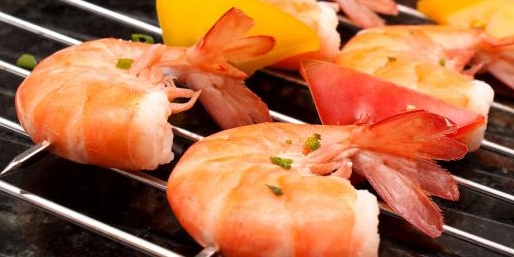In the wake of the devastating and deadly 7.8 magnitude earthquake that rocked the north coast regions of Ecuador’s Manabi and Esmeraldas provinces on April 16, the Camera Nacional de Acuacultura (National Chamber of Aquaculture) is mounting a drive to distribute non-perishable food, clothing, medicine, bedding, insect repellent, flashlights, batteries and other items to those in need. Cash donations are being solicited to finance the relief effort, and details about making arrangements to transfer funds by wire are available by visiting www.cna-ecuador.com.
The death toll thus far has climbed to over 400, and billions of dollars of property damage have been reported. While the extent of the disaster’s impact on the aquaculture sector is still being assessed, it is believed that up to 6,000 hectares of shrimp ponds and support infrastructure around Pedernales have been destroyed. This area typically accounts for as much as 10% of the nation’s annual farmed shrimp output.
 Meanwhile, it is expected that producers of Pacific white shrimp (Penaeus vannamei) from Ecuador will still be on the scene at the Seafood Expo Global in Brussels from April 26-28, as their exports bring much needed hard currency into an economy that has been coping with reduced dollar revenue streams due to low oil prices. Scheduled to hold forth at Stands 959 and 1068 in Hall 6 are representatives from Docapes, Edpacif, Expalsa, Langosmar Organic, Negocios Industriales Real NIRSA, Omarsa, Quirola Group and Sociedad Nacional de Galápagos SONGA.
Meanwhile, it is expected that producers of Pacific white shrimp (Penaeus vannamei) from Ecuador will still be on the scene at the Seafood Expo Global in Brussels from April 26-28, as their exports bring much needed hard currency into an economy that has been coping with reduced dollar revenue streams due to low oil prices. Scheduled to hold forth at Stands 959 and 1068 in Hall 6 are representatives from Docapes, Edpacif, Expalsa, Langosmar Organic, Negocios Industriales Real NIRSA, Omarsa, Quirola Group and Sociedad Nacional de Galápagos SONGA.
Operating along the equator and thus benefiting from favorable growing conditions, shrimp farmers in Ecuador are able to harvest as many as three crops a year. In 2014 they collectively ranked as the third largest producer of white shrimp in the world, exporting 298,638 metric tons to global markets.
“In 2015 we launched the First Class Shrimp campaign to showcase the unique business,” said José Antonio Camposano, executive president of Camera Nacional de Acuacultura. “Our product is produced under the best aquaculture practices, being socially responsible and environmentally friendly, in compliance with international regulations and following the highest standards in the shrimp industry.”
No newcomer to the aquaculture business, Ecuador’s first commercial shrimp farm was built in 1967 and is still in production. The industry geared up dramatically in 1978 when a number of entrepreneurs, among them Rodrigo Laniado, Alfonso and Enrique Gunaur, took it to new levels both in terms of quantity and quality.
Interestingly, the first organic-certified shrimp farm in the world was put into production by Guayaquil-based Expalsa as its ponds rebounded from devastating white spot syndrome that threatened to wipe out shrimp aquaculture in Ecuador and beyond.
After the highly infectious disease struck in 1999, many producers responded by trying to treat the symptoms with chemicals, antibiotics, fungicides, pesticides and ozone. But not Expalsa, which shunned medicinal remedies and instead took a holistic approach to recuperation by reducing pond stocking densities to natural habitat levels.
When this writer first visited Expalsa headquarters in 2007, Humberto Trujillo, who was then the company’s vice president in charge of managing exports and is now president and ceo, commented: “Actually, without knowing it we transitioned into becoming an organic aquaculture producer after harvesting several chemical-free crops. As a result, we became the only integrated shrimp producer in the world that is 100% organic-certified – from our feed manufacturing plant to our hatchery and grow-out ponds.”

Today Ecuador is the leading supplier of frozen shrimp to the European Union, and the third ranking shrimp exporter to the United States. It has also become a significant supplier to East Asia, primarily to Vietnam and China. Shipments to Vietnam, which accounted for a quarter of Ecuador’s 2014 shrimp exports, have surged as that nation’s shrimp industry continues to cope with ramifications from the spread of early mortality syndrome (EMS) disease.
Ecuador’s aquaculture sector employs sustainable cultivation practices utilizing strict quality control parameters. Approximately 300 hatcheries produce microscopic nauplii and post-larvae shrimp, and about 270,000 hectares from Esmeraldas province bordering Colombia in the north to the El Oreos boundary with Peru in the south are dedicated to shrimp farming. The highly productive Guayas coastal province accounts for two-thirds out total output.
“Our low-density production system – 8 to 15 larvae per square meter – allows shrimp to have more space, and thus grow under less stress,” said José Antonio Camposano. “These and many other characteristics guarantee that product from Ecuador is the real First Class Shrimp.” – Reported by John Saulnier





